Farmer-Led Research
EFAO’s Farmer-Led Research Program helps farmers combine their curiosity with scientific rigour to answer their most challenging on-farm questions.
Since 2016 when EFAO launched the Farmer-Led Research Program, more than 80 different farmers have received funding and support to conduct over 125 trials for their farms, and shared results freely with others at field days, workshops, research roundtables and Symposia.
The intake for the 2025 season is now open and will close January 19, 2025.

Stream 1: Conduct a trial of your own.
Apply for a research, variety, or breeding trial using this application. Read here for details.
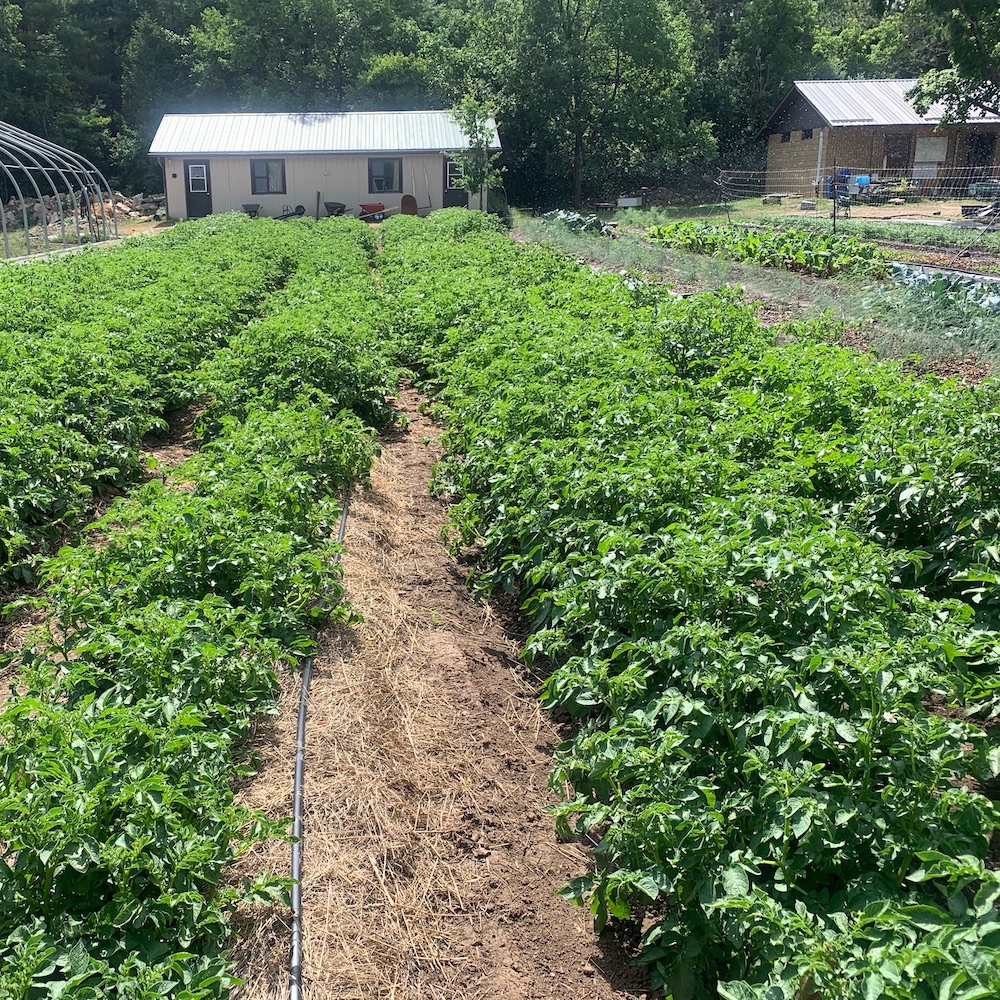
Stream 2: Join a continuing trial.
For 2025: no-till squash, no-till potatoes, plant available N from cover crops. Read here for details.
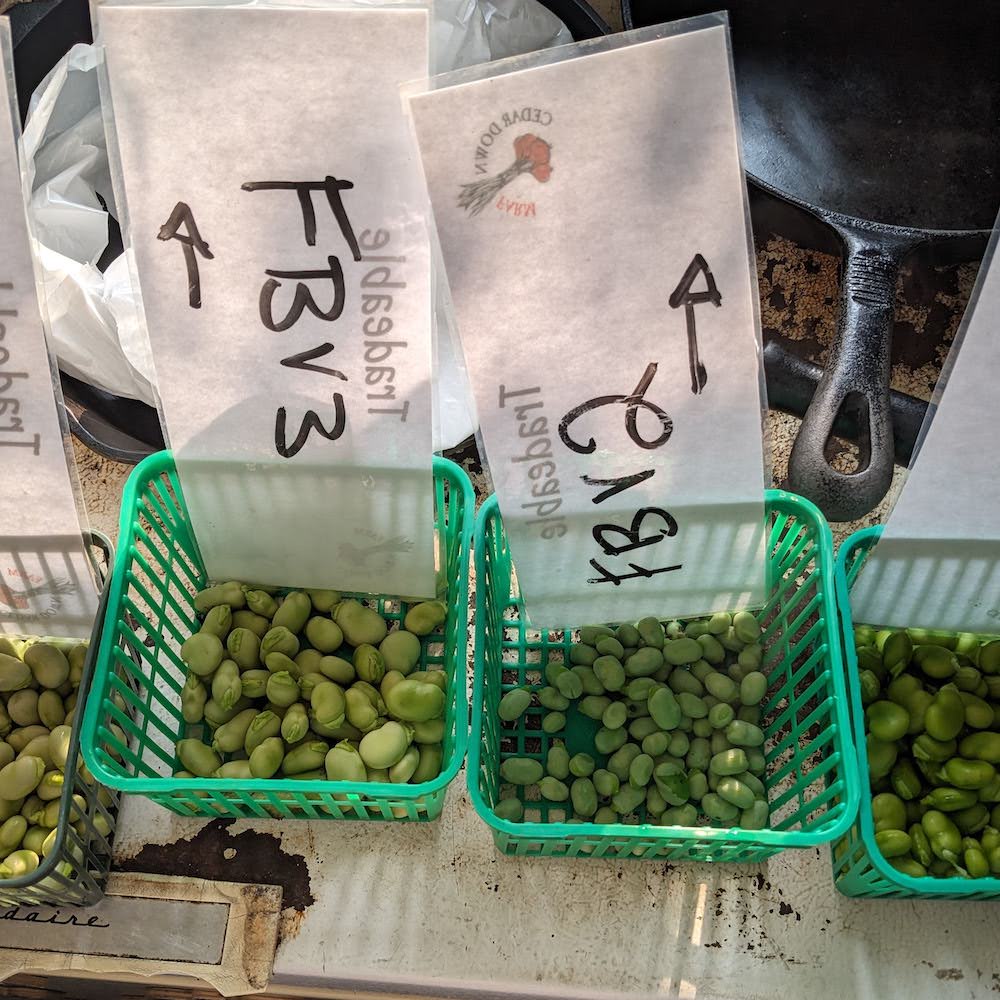
Stream 3: Join a new multi-farm trial.
Look for opportunities in the February E-newsletter.
Deadline TBA.
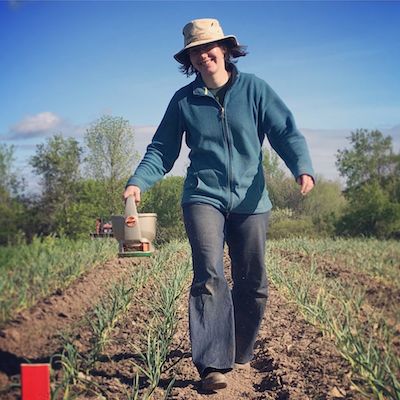
About Farmer-Led Research
Learn more about what it means to be a farmer-researcher, what you can research, and how you can apply.
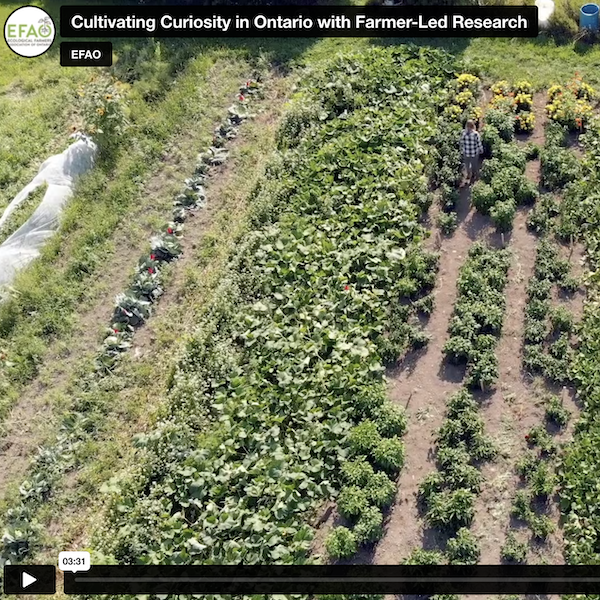
Watch the video
Watch Cultivating Curiosity, a short film about farmer-led research in Ontario.
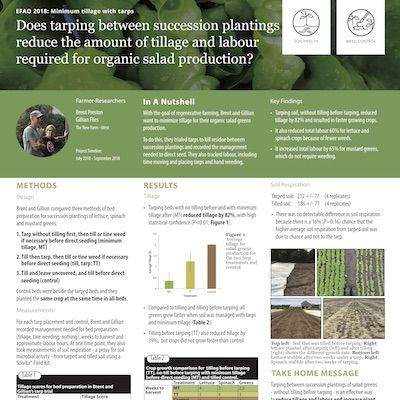
Research Library
Read and download protocols and reports from farmer-led research projects.

FAQ
Read FAQ to learn more about designing a trial and more.
About Farmer-Led Research
What is farmer-led research?
Farmer-led research is a process of inquiry that farmers can use to address on-farm curiosities and challenges in a way that is compatible with their farming practices and equipment. It is a flexible and powerful tool that can help improve operations on the farm, including the environmental and economic impacts of innovations and comparisons.
How do I become a farmer-researcher?
To become a farmer-researcher with EFAO, apply for funding to conduct your own trial or join a continuing trial or a new multi-farm trial. Opportunties to join new multi-farm trials are announced in February in the EFAO e-newsletter.
Application open in October of each year, and close the following January.

In 2019, EFAO’s Farmer-Led Research Program won the Excellence in Agriculture Award. This award recognizes agri-food businesses, individuals and organizations that have raised the bar for agri-food excellence, demonstrated leadership in their field, undertaken strategic product development benefiting their sector, or advanced technological innovation. Read more >
What topics are funded?
EFAO supports farmer-led research in the following ten priority areas, as decided by EFAO member-farmers.
- Alternative livestock feed
- Cover crops
- Disease & pest control
- Livestock breed selection
- Nutritional quality of food
- Pasture regeneration
- Pollinator services
- Seed selection, production & breeding
- Soil health
- Weed control
How will projects be selected? Who selects projects?
Selected applications will focus on a research question that practical, measurable, achievable for ecological agriculture in Ontario.
EFAO’s Research Advisory Committee determines the projects that are funded. The Committee is made up of EFAO member-farmers and academic partners.
If you want to conduct a project that is not selected for funding, staff will provide feedback for you to apply again the following year or move ahead with preliminary data collection.
What is expected of me as a farmer-researcher?
When conducting farmer-led research in cooperation with EFAO, you will work with EFAO staff to design a project that is appropriate for your farm operations and the question you are asking. Farmer-led research is an added responsibility in an already busy season. In order for your project to be successful, it requires thorough planning in the form of a protocol, good data collection skills and follow-through and communication.
Farmer-researchers are expected to:
- Help set project parameters
- Complete research, variety or breeding trial following the written protocol
- Collect and record data as specified
- Turn in data to EFAO by the date specified in the written protocol
- Help interpret data analysis and edit research report and poster
- Keep in contact with EFAO staff with updates and questions
- Take photos of the project during the season
- Complete feedback surveys related to the program
- Invoice EFAO for farmer-fee and approved research expenses by deadline
- Provide research mentoring, including reviewing related protocols and phone consultation with fellow farmer-researchers on related projects (if applicable)
- Host an EFAO-organized field day related to the farmer-led research project (if applicable)
- Attend and present at the Research Symposium that is held in conjunction with the annual EFAO Conference that takes place end of November/early December (if possible)
Stream 1: Conduct your own trial.
Farmer-led research
What are you curious about on your farm? Do you have an idea for a research, variety or breeding trial and need help designing an experiment?
EFAO can help you answer your on-farm questions with financial and technical support. EFAO feels strongly about providing financial support for farmers who participate in the Farmer-Led Research Program.
Farmer-researchers receive:
- EFAO members receive a stipend per farm per project depending on the scope of the project. This includes $1000 per replicated trial; $500 per demonstration and screening trials; and $100/variety for variety trials.
- Reimbursement for qualified seed and soil/plant analysis, when applicable
- Farmer-Researcher farm gate sign
- Complimentary tickets to farmer-led research training events and the Research Symposium
- Reimbursement for 1 night stay at hotel for the Symposium (when applicable; pending funding)
EFAO staff will help throughout the entire project, from design to the final report. Each project is unique, but typical responsibilities for staff include:
- Writing a detailed protocol and data collection sheets
- Training, as applicable
- Troubleshooting throughout the protocol
- Data analysis and writing a research report
Stream 2: Join a continuing trial.
Continuing trials offered for 2025 include:
No-till squash trials
Work with EFAO staff to grow winter squash with no-till methods using wood chips or other materials; and contribute to data collection for these systems in Ontario.
No-till potato trials
Work with EFAO staff to grow potatoes with no-till methods using mulches; and contribute to data collection for these systems in Ontario.
Plant available nitrogen from cover crops network
Work with EFAO staff to sample biomass and soil from cover cropped areas on your farm, and contribute to a regional database of nitrogen availability from cover crops to better inform fertility management.
- Any cover crop you are growing for organic vegetable production or following small grains production is eligible.
- Data collection required includes taking time sensitive samples of the cover crop biomass and cover cropped soil and mailing the samples to the participating lab within 24 hours of sampling; along with recording seeding rate, planting and termination dates and methods.
- EFAO will provide sampling bags, postage, and cover the cost of the lab fees for the biomass and soil analyses.
This trial is continuing the work done by Jesse Way of Milky Way Farm, which you can read about here.
Farmer-researchers receive:
- Data specific to their farm
- Opportunity to participate in a research network and contribute to an open access database for organic vegetable production
- Stipend of $250-$1000 depending on scope of trial + sampling costs (bags, postage, lab fees)
- Farmer-Researcher farm gate sign
- Complimentary tickets to farmer-led research training events and the Research Symposium
Support from EFAO’s research team including:
-
- Writing a detailed protocol and data collection sheets
- Online and in person training for biomass and soil sampling
- Troubleshooting throughout the protocol
- Data analysis and writing a research report
FAQ
Q. What is the timeline for research throughout the year?
Read this blog to learn more about the rhythm of research.
Q. What kind of design can I use to answer my question?
A. There are different types of research design to help you explore your on-farm curiosity. The choice of design and method of examination depends on the specific question, your motivation and capacity. At EFAO, we group the farmer-led research into three categories: Research, Variety, and Breeding trials.
Research trials include
Randomized & replicated trials:
A randomized and replicated trial compares multiple pairs/sets of treatments or comparisons, and the treatments or comparisons are randomly assigned in order to avoid bias.
- Replicating and randomizing allow you to use statistical models, like t-tests (for 2 treatments, or pairs) and analysis of variance (ANOVA; for 3+ treatments, or blocks) among others, to test whether a difference between or among treatments is by random chance or due to the treatment you are testing.
- Read more about replication and randomization below.
Observational studies:
An observational study involves collecting and analyzing data without changing anything. Aspects to observe depend on your specific curiosity, and may include emergence, growth rate, colour, health, smell, soil quality, harvest ease, grazing preference, etc.
- Observational studies can occur on a single farm over one season, but more confidence comes with observing over multiple seasons or on multiple farms, if possible.
- Observational studies are less likely to be funded through EFAO’s Farmer-Led Research Program unless there is clear justification for why this design is appropriate and can produce impactful results.
Side-by-side demonstrations:
A side-by-side demonstration – sometimes called a “look-see” – compares changes in management (i.e. a treatment) to a “business-as-usual” no-treatment control.
- Demonstrations are not randomized or replicated, and usually involve side-by-side strips of treatment and control. Things to consider when setting up demonstrations include selecting a piece of land that is relatively uniform across the strips.
- Side-by-side demonstration studies usually occur as a standalone on a single farm over one season. If you repeat a side-by-side across 3+ fields or farms or 3+ more seasons, then you have a replicated trial and can often use statistical models to assess the difference between or among your treatments.
- Standalone demonstration studies are less likely to be funded through EFAO’s Farmer-Led Research Program unless there is clear justification for why this design is appropriate and can produce impactful results.
- Refer to A Guide to On-Farm Demonstration Research for more information on how to design a demonstration study.
Variety trials include
Variety trials:
A variety trial helps farmers manage risk by identifying optimal genetics for a grower’s unique environmental, production system and market conditions. They are appropriate when the farmer has narrowed the varieties to a practical number for replicated evaluation and has practical and informative metrics for evaluation.
- Variety trials evaluate each variety in multiple plots at the same time following a replicated experimental design.
- Variety trials are more likely to be funded when 3+ farms are involved, with at least one “mother” site having 3+ replicates and each daughter site with at least two replicates, all including a check variety. This design is sometimes done with “mother-daughter” sites, where the mother site assesses all varieties and the daughter sites assess a smaller selection of sites.
- Refer to The Grower’s Guide to Conducting On-farm Variety Trials by the Organic Seed Alliance for more information.
Screening trials:
Sometimes variety selection start with a preliminary year of screening, where the farmer can evaluate whether a variety merits consideration for a replicated trial. This involves observing a larger number of varieties than is practical in a replicated trial; checking for trueness-of-type or other seed quality concerns; evaluating the overall uniformity of an adequately large population; identifying potential strengths or weaknesses of a variety; or experimenting with a core question that is less likely to be influenced by field variation (e.g. does this variety sell well at market?).
- Screening trials evaluate a larger number of varieties in only one plot per variety (i.e unreplicated) on one or more farms.
- Screening trials are more likely to be funded with strong justification for the importance of the specific crop.
- Refer to The Grower’s Guide to Conducting On-farm Variety Trials by the Organic Seed Alliance for more information.
Breeding trials include
Plant breeding trials:
A breeding trial selects traits in order to change the genetics of a genetically variable population and produce a new variety with desired characteristics.
- The traits that are chosen and the methods of selection vary according to the breeder. Many farmer-led breeding trials select for a holistic suite of traits including management ease, regional adaptation, storage and flavour.
- Before committing to a long-term breeding project it is important to evaluate the potential parental material that you’ll start with. This typically takes place by doing a variety trial of varieties that most closely have the traits you are looking for.
- Refer to Introduction to On-Farm Organic Plant Breeding and Participatory Plant Breeding Toolkit by the Organic Seed Alliance; and Breeding Organic Vegetables: A Step-by-step Guide For Growers by Rowen White and Bryan Connolly for more information.
Q. What is a treatment?
A. A treatment is something that you do or apply to a crop or field in randomized and replicated trials and demonstrations. For example, a treatment could be a cover crop mix, compost rate, grazing management, seeding method, etc.
Q. What is a control?
A. In the context of randomized and replicated trials and demonstrations, a control is your “business-as-usual” management. In the context of breeding and variety trials, a control is the “check” or standard commercial variety. In all cases, the control is used to measure the effect of the treatment/trial variety, compare the growing conditions of the trial season to seasonal averages, and communicate results to others.
Q. What is an experimental unit?
The experimental unit is the entity that you want to make inferences about. With farmer-led research, we rarely want to make inferences about a single head of lettuce or a single heifer, for example. Rather, we want to know how a bed or harvestable unit of lettuce responds, or a group or herd of cattle respond. For this reason, an experimental unit on the farm is usually representative of our crop. This could mean 15 heads of lettuce, a strip of corn, 20 head cattle, or 6 Saskatoon bushes, etc. Deciding on the specifics of an experimental unit comes down to your instinct as a farmer and the practicalities of your trial.
Q. What is a replicate and how do I design one?
A. Replicates are multiples of treatments and controls. Replication is important because it gives you a “second opinion”. With only one pair or set of strips/plots/beds/animals/etc. in a trial, your conclusion is based on one observation and you do not know if the results you see are a random fluke or a real treatment effect.
Replicating across the field/pasture/farm helps account for variation across the soil and land and is useful for teasing out differences in complex traits such as yield or disease resistance.
Example of replicating “in space”
You are comparing tillage (control) to two cover crop treatments in strips and you decide to test this with 5 replicates. This design results in five sets with three strips each. Each strip is randomly assigned to one of the cover crop treatments or tillage, for a total of 15 strips or plots.
You can replicate “in space” by setting up multiple pairs or sets of plots, beds, strips, fields, paddocks, farms, etc. Or you can replicate “in time” by repeating the comparison at multiple times like in different succession plantings, cohorts, or years.
Example of replicating “in time”
You are comparing a standard feed ration (control treatment) to a reduced protein treatment for raising chickens and you decide to test this with 4 replicate groups of chickens. This design results in 4 cohorts of chickens, with each cohort divided into two groups that are randomly assigned to one of the feed rations.
For other examples of replication, please see previous farmer-led research reports at: efao.ca/research-library.
Q. How many replicates do I need?
A. For a randomized and replicated trial, you need a bare minimum of 3 replicates. This allows you to run basic statistics and determine if any difference you see is due to a random fluke or a real treatment effect.
That said, we prefer at least 4, with 5 or 6 replicates being ideal. A minimum of four replicates gives you room in case one replicate fails or is damaged. In general, the more replicates you have, the greater your ability to detect a difference between or among treatments. If you are going to the effort of setting up a trial, you might as well give yourself the best chance of getting reliable data!
Q. What is randomization and why is it important?
A. Randomization is assigning treatment(s) and control to each experimental unit by chance. By doing so, you eliminate any bias you have. Randomization also allows you to account for any effects of heterogeneity of the soil or land (i.e. drainage).
Randomizing can be done in several ways. If you have only two treatments (or treatment and control), you can flip a coin to assign them. If you have more than two treatments, you can assign a treatment order by picking out of a hat. In all cases, you can use a random number generator in a spreadsheet program using function: =rand().
In general, we try to randomize in pairs or blocks. This means that treatments are not randomly assigned across all experimental units, but are randomly assigned within pairs (in the case of two treatments) or blocks (in the case of more than two treatments).
Randomizing with a coin
You want to assign 2 varieties of spinach to 8 beds, for a total of 4 replicate pairs. First, you denote variety A as heads and variety B as tails.
- Randomized paired design (standard way): Divide the 4 beds into 2 pairs. Flip a coin and assign the corresponding variety to the first bed in the first pair. Assign the other variety to the second bed. You have now randomly assigned the first pair. Do the same for the second pair.
- Completely randomized design (less conventional, but has its place): Flip a coin and assign the corresponding variety to bed 1. Flip the coin again and assign the corresponding variety to bed 2. If both beds are the same variety, assign beds 3 and 4 to the other variety. If beds 1 and 2 have different varieties, then flip the coin again to assign a variety to bed 3. Bed 4 is assigned by elimination.
Randomizing with a hat
You want to assign 6 varieties of spinach to 30-half beds (15 full beds), for a total of 5 replicates.
- Randomized block design (standard way): Divide the full beds into 5 sets or blocks of 3 beds (6 half beds) each. You want to assign varieties in such a way that each block has every variety. Cut up 4 equal sized pieces of paper, write the name of each variety on a piece, and place the paper pieces in a hat. Shake up the paper, draw from the hat and assign the corresponding variety to the first half bed in the first block. Without replacing the paper, draw a second piece of paper from the hat and assign to the second half bed, and repeat for the other two beds in the first block. Replace all paper into the hat and repeat for the other 4 blocks.
- Completely randomized design (less conventional, but has its place): Cut up 30 equal sized pieces of paper, write the name of each variety on 5 pieces each, and place all 30 pieces in a hat. Shake up the paper, draw from the hat and assign the corresponding variety to the first half bed. Without replacing the paper, draw a second piece of paper from the hat and assign to the second half bed. Repeat until all pieces are drawn and all half beds are assigned.
Randomizing with a random number generator
You want to assign 4 varieties of barley to 20 strips, for a total of 5 replicates.
- Randomized block design (standard way): Divide your 20 strips into 5 blocks or sets with 4 strips each. You want to assign varieties in such a way that each block has every variety. In Column A of a spreadsheet, enter “V1”, “V2”, “V3” or “V4” into 4 cells. Copy and paste this grouping 4 times down the column, for a total of 20 cells (A1 through A20). In Column B of the spreadsheet, enter function “=rand()” in B1 through B20. Select/highlight columns A and B and copy and paste formula results or paste as values only. For each group or block, assign the variety with the lowest number to the first strip in a block, the variety with the second lowest number to the second strip, etc. for the other two strips in a block. Repeat this process of assigning varieties within a block to the other replicates.
- Completely randomized design (less conventional, but has its place): In Column A of a spreadsheet, enter “V1”, “V2”, “V3” and “V4” in 5 cells each, for a total of 20 cells (A1 through A20). In Column B of the spreadsheet, enter function “=rand()” in B1 through B20. Select/highlight columns A and B and copy and paste formula results or paste as values only. Keeping the columns selected/highlighted, sort by Column B. Use this order to assign varieties to your half beds.
Q. I want to test whether an amendment like a type of fertilizer, microbial inoculant, or soil booster works. How should I proceed?
A. It is often difficult to detect the effectiveness of an amendment. For this reason, we recommend a two-step process for testing the efficacy of an amendment.
Step 1
Compare the effects of the amendment in a side-by-side or observational study. This could look something like adding the amendment to a strip or plot in your beds or field beside a strip without the amendment. Even better – try multiple pairs of strips! Keep in mind that paired strips should be as similar to each other as possible in all other regards, including similar soil type, drainage, shade, crop, crop history, etc.
- Record notes on the details of your set-up like the factors mentioned above, amendment rate, application date(s), management; and any observations that are relevant and practical to your interest in the amendment. This may be things like crop health, pest control, yield, etc. Also remember to take lots of photos of your trial.
Step 2
If you observe a difference and still want more information, you have good preliminary data to apply to EFAO’s Farmer-Led Research Program. Follow the instructions in the application, using the observational data and information you recorded in your side-by-side plots.
Q. What other resources are there for farmer-led research?
- EFAO’s Research FAQ | Frequently asked questions >
- EFAO’s Research Library | Research Library >
- BC Forage Council | A Guide to On-Farm Demonstration Research >
- NE Sustainable Agriculture Research & Education | A Practical Guide to On-Farm Pasture Research >
- Organic Seed Alliance | Growers Guide to On-Farm Variety Trials >
- Organic Seed Alliance | Introduction to On-Farm Organic Plant Breeding >
- Organic Seed Alliance | Participatory Plant Breeding Toolkit >
- Northeast Organic Farming Association of New York (NOFA-NY) | Breeding Organic Vegetables: A Step by Step Guide for Growers > by Rowen White and Bryan Connolly
Please contact Sarah Larsen, sarah@efao.ca, to find out how you can receive support to conduct research for your farm.
